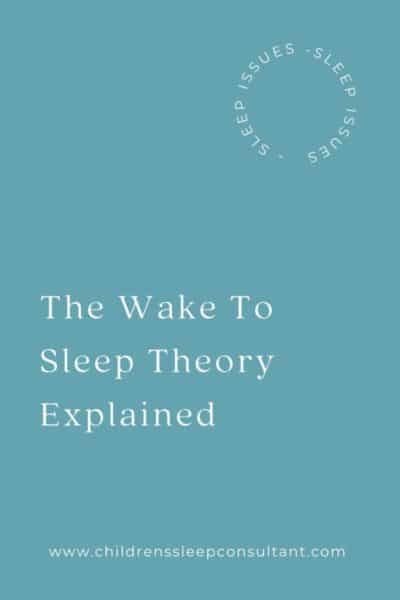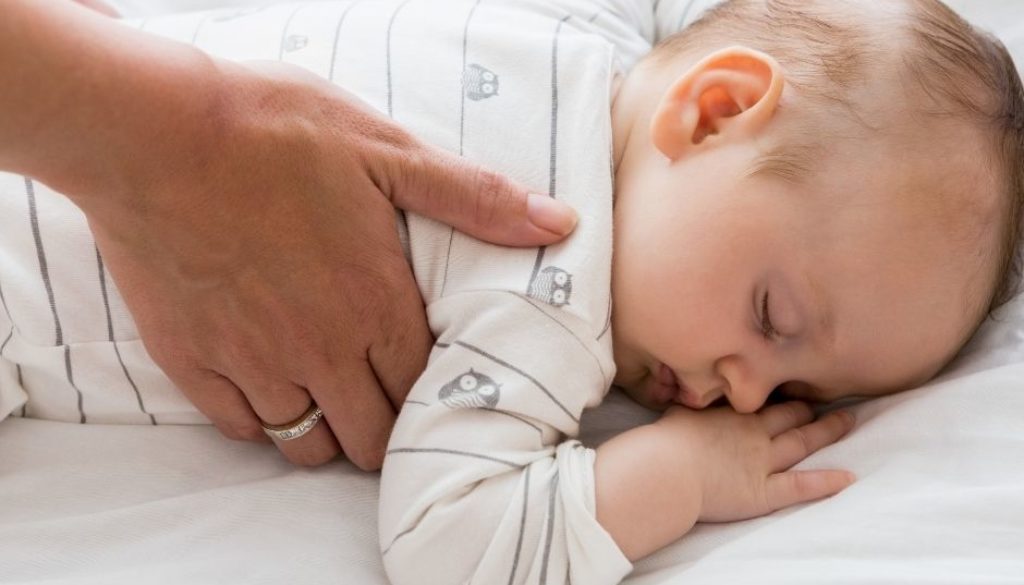The Wake to Sleep Theory Explained
Those of you who have followed me for some time, either via this blog or over on social (I’m on Facebook and Instagram), will know about my love for the wake to sleep method. This week we’re going to look at what exactly it is and the theory behind it, and why you might want to start implementing it today.
What is Wake to Sleep?
When families are dealing with a baby that is waking up too frequently, and as a result, they’re working on eliminating that wake-up, this technique is the one I always recommend. Wake to Sleep, simply put, means going in and waking your baby up-in order to help them sleep better.
Now, before you panic! This is a tried and tested technique and really not as crazy as it sounds. If your baby is a habitual waker (I don’t recommend you use this method for random wake-ups), then you should definitely read on.

How to tell if the Wake to Sleep method is for you
First and foremost, as with all of my families, I recommend keeping a sleep diary for at least a week. Note down the times that your baby wakes and why they are waking. If you notice a pattern and determine that your baby is a habitual waker, this method is for you! The sleep diary will be very important in helping you predict when your child will wake up for you to implement the method.
In your sleep diary, pay particular attention to the time your child wakes in the morning, when and for how long they nap for, what time they go down for their nighttime sleep and what time the wake-up occurs.
Using the Wake to Sleep Method to eliminate the waking
Once you have your sleep diary and you know what time your baby is due to wake up, you can now work on eliminating that wake-up. So this is what we do:
- Go into your child around 30-40 minutes before you expect them to wake- this is to reset their sleep cycle. Don’t be scared!
- Work gently- you don’t want to disturb your child; you’re just resetting the cycle. So shush, pat, talk gently- whatever it takes to gently wake your child from their current sleep cycle.
- Once your child has made either a movement or a slight noise, they’re starting to wake. Some children may reach this stage as soon as you enter the room; others may take longer.
- Leave your child and allow them to fall back to sleep. The sleep cycle has been reset!
Why the Wake to Sleep Method works
Each time your child falls asleep, they enter a number of cycles where they range from a deep sleep to waking. By waking your child 30-40 minutes before they usually wake up, you’re interrupting that cycle just before they start to head towards wake up. This means that your child then falls back to the start of the next sleep cycle quickly, and the length of time before they wake again is lengthened. If your child is habitually waking at, for example, 11 pm, then waking them before 11 and sending them back into a deeper sleep will eliminate that wake-up.
I recommend trying this method for at least three nights to break the habit.
Troubleshooting
Because every child is different, this method may not always work the first time. That’s fine and completely normal. If you try the Wake to Sleep method and your child still wakes up at the usual time of 11 pm, the chances are that you didn’t quite manage to re-set the cycle enough. Use your gentle sleep training methods to help them back to sleep, and the next night ensure you wake them a little more so that you can properly re-set the cycle. Some children may need to be completely woken up before they can lie back down again to sleep, and others will only need the smallest of nudges. Only you will know what works best for your child.
Be aware that the Wake to Sleep method should not now become your new habit. This is why I recommend you try this for 3 nights only (although if your child has been habitually waking for a long time, it may take a little longer) and then give your child opportunity to fall back to sleep and eliminate the wake up by themselves.





